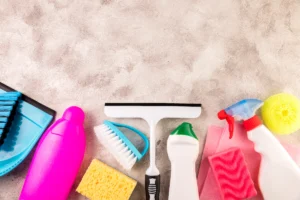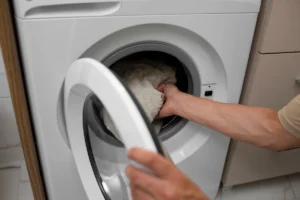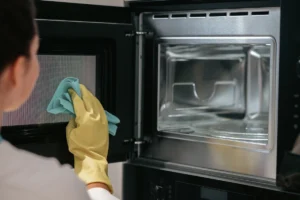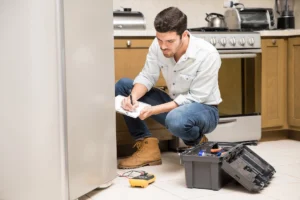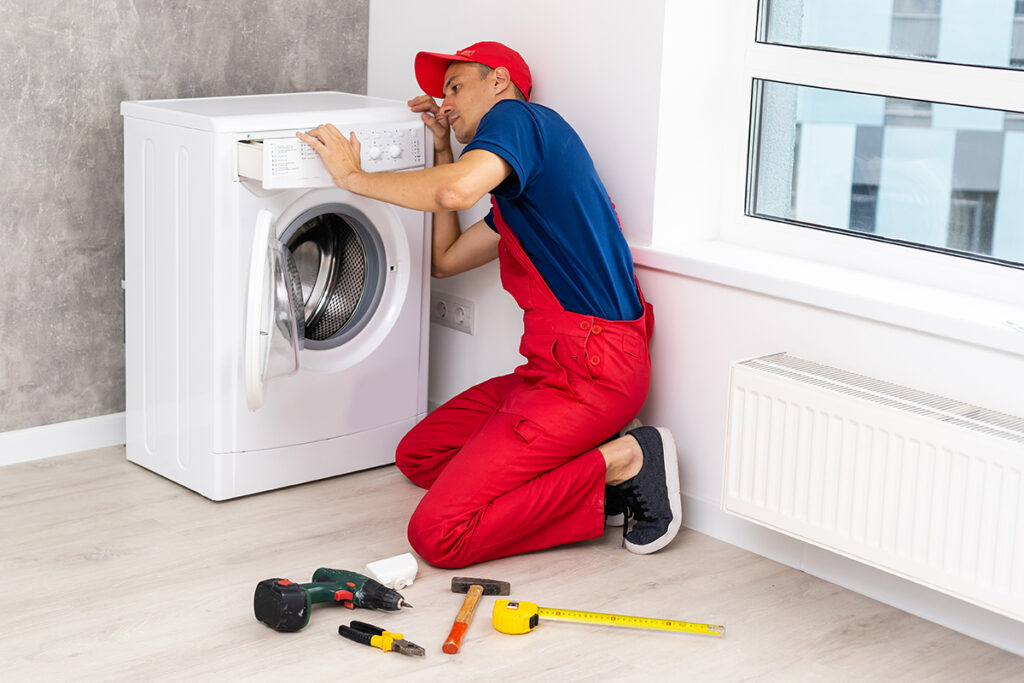
4 Quick Fixes for Common Washing Machine Problems
Washing machines are important appliances to have at home, especially for managing the laundry loads of large households. Having a washing machine with dryer allows you to conveniently wash a ton of dirty clothes without the tedious process of hand washing. But imagine if your machine suddenly malfunctions while you’re doing the laundry on a very rainy day. The bad weather will likely prevent any technicians from reaching your home until the skies clear up.
It’s not a good idea to simply leave your clothes inside the machine while you wait for it to get fixed, as this can cause it to develop a musty smell. While it’s definitely best to get professional help for major repair work, you should be able to address issues like having stinky interiors, a jammed door, or a blocked drain. These scenarios are quite common, and they can be easily resolved even if you have limited repair skills. Learning how to troubleshoot common washing machine problems may save you from needing to call a technician and prevent delays to the completion of your chores.
Read on to learn about four quick fixes for common washing machine problems.
Remove Funky Smells from the Washer’s Drum
Although washing machines are designed to clean your clothes, these appliances need cleaning, too. Detergent and fabric softener residue can build up on the surface of the drum as well as in the nooks and crannies of your washer. This buildup can cause mold growth, which is the main cause of the musty odor you smell when you open the washer door. The smell can also transfer to your clothes when they’re in the machine, so instead of getting fresh, clean clothes, you’ll end up needing to wash your clothes again. Thankfully, a smelly washing machine isn’t a major issue and can be easily resolved by routinely deep cleaning your washing machine.
Remove buildup, mold, and foul odors by running a clean cycle. If your appliance doesn’t have this feature, you can add a cup of liquid bleach into the drum or fill up the max line in the detergent dispenser and run a hot cycle on an empty washing machine. Then, run a rinse cycle to remove any bleach residue. Also, make sure to scrub away any mold in the gaskets of a front-load washing machine or under the lid of a top-load washer.
Remove Clogs in the Drain Hose or Pump
If your washing machine isn’t draining after you’ve used it, there may be a blockage that is preventing it from doing so. The drain hose or pump may be clogged with a small piece of clothing, residual gunk, or other debris. Check if this is the cause by unplugging the appliance and locating the drain pump of your washer with the help of the user manual. Take off the screws from the front panel and drain any excess liquid. Then, tilt and prop up the front of the machine so you can access the pump located at the bottom. Check the pump and drain for clogs, gently removing any blockage using a pair of pliers.
Sometimes, the clog can be in the corrugated tube that leads to the pump. If this is the case, unclamp the tube and prepare to drain it. Once there aren’t any more liquids left, see if any items are clogging the tube. Pull out any clogs by hand or with pliers. This should fix the issue and get your washer to drain again.
Fix a Door That Won’t Open
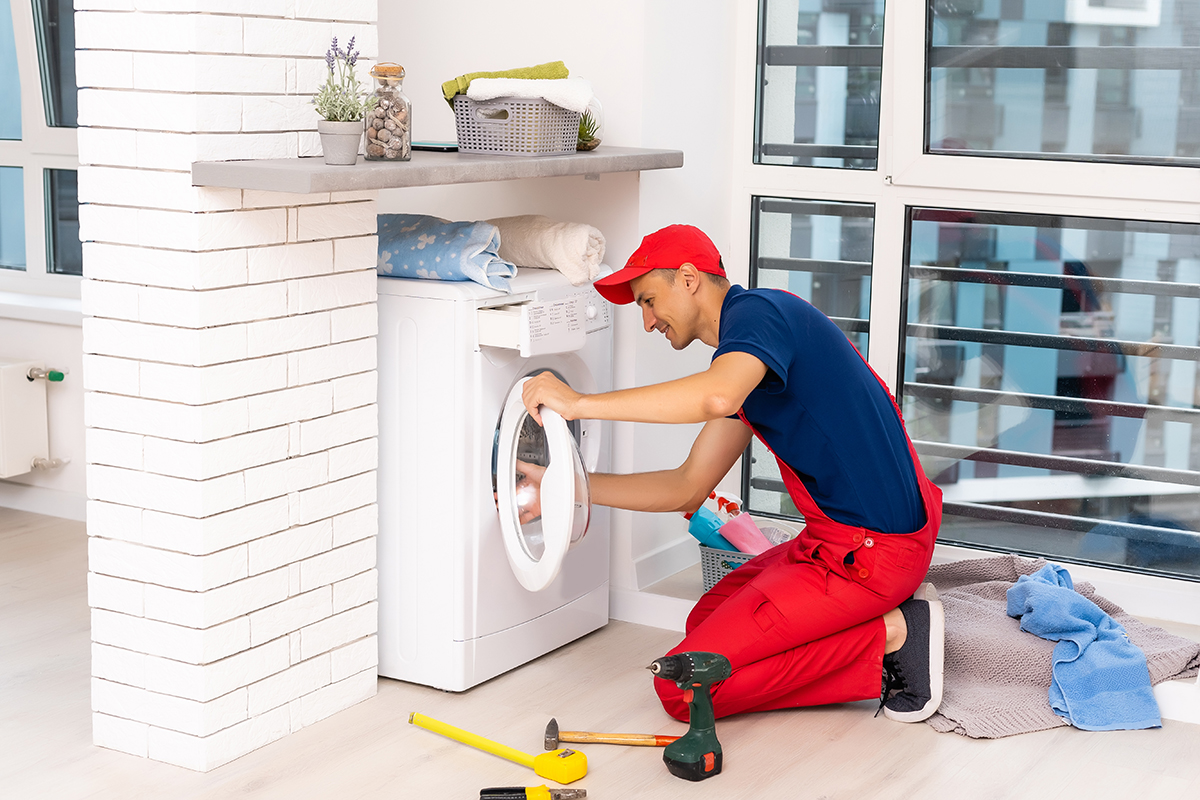
Most front-load washing machines have doors that are programmed to remain sealed and secure while a wash cycle is running. This prevents accidental door opening and ensures that no liquid content escapes from the chamber. The door automatically unlocks when a wash cycle has ended, but when it malfunctions, your clothes get trapped inside the washer.
Fortunately, there’s an easy fix for this issue. All you need to do is check for water inside the washing machine. If this is the case, simply set your washer on another cycle to drain the water. You should be able to open the door and collect your laundry when the water has been fully drained. If the door remains locked even when there is no more water inside the chamber, the cause might be a digital issue. In this situation, restarting the washing machine should cause it to unlock the door.
Reduce Loud Noises
All washing machines produce some noise as they operate, but if you notice a sudden increase in sound, there might be something wrong. Commonly, the source of the unusually loud noise is small metal items like coins or keys that have been forgotten in someone’s pocket. That’s why it’s important to check all the pockets of your clothes before doing the laundry. It won’t just prevent your machine from making strange noises, but will also ensure that the items won’t damage the drum or other interior parts of the washer when they get tossed around.
Whether you have a front-load or top-load washing machine, having a unit at home makes laundry chores easier. But like all machines, you’re likely to encounter a problem or two in the course of your usage. Knowing these quick and easy fixes will allow you to get back to doing your laundry, but if problems persist even after you’ve done some repairs, it’s best to get the opinion of a professional technician.
Related Products
- Sold Out14% Off
 [wc-ps tag="span"]Compare
[wc-ps tag="span"]Compare- Variable Water Pressure Technolog
- Fabcon Dispenser
- Energy Efficient Motor
- Large Led Display
- Eco-Saver Water Recycle Function.
- 8 Wash Cycles
- 10 Water Level Selector
- Quiet Wash
- Air Dry
- Stainless Steel Hub
- Automatic Imbalance Correction & Adjustable feet
- Child Lock
- Titanium Gray Color
- Dimensions (HxWxD): 35 x 20.5 x 20.5in
Original price was: ₱11,498.00.₱9,900.00Current price is: ₱9,900.00.









